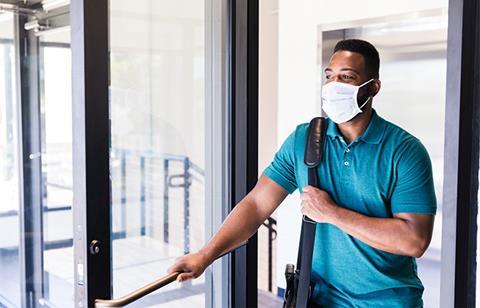
The Covid-19 pandemic, as the world has now learned, is a process rather than an event. The virus remains deadly and will shape our working practices for the foreseeable future.
We need to constantly adapt to its ongoing challenges. One significant challenge is going to be getting employees back to their primary workplace. Many people have been working the whole time, just from a different location, so the term “return to work” leaves some feeling rightfully confused.
The seismic changes we have seen this year mean that homeworking is going to be with us for a long time to come, but it can’t and won’t be universal. Many organisations want and need their people to return to their primary workplaces and managing this transition will require thoughtful planning and communications.
Planning processes
To manage this planning process, a dedicated team will be helpful. Some organisations will already have a Covid-19 response team in place and they will be well versed in the guidance and recommendations surrounding the transition back to populating standard workplaces.
These teams must be mindful that people want and need certainty, and that is challenging in the current environment. Many employees are feeling anxious or overburdened by constant change, and may be struggling to engage in a constructive way with work-related communications. To understand some of the impacts of Covid-19 on employees, read our ‘Future of Work’ research findings.
Clear and unambiguous communication from employers will be key. To help facilitate this, creating and sharing plans around changing working practices with employees and other interested parties will ensure that everyone understands what is expected.
People at all levels within the organisation should be asked for their input in drawing up these plans. They will all have their own experiences and asking them to recount these and to feed in issues associated with their specific function will allow the net to be cast as wide as possible.
Communication is key
The best way to engage and to draw out their thoughts might be through surveys, workshops, questionnaires, apps or other methods. It will all depend on the size, nature, scale and culture of your organisation.
It makes sense for this consultation process to be ongoing, perhaps via regular active feedback sessions. Those continuing to work from home should also be encouraged to provide input and need to receive continuing support: out of sight should never be out of mind.
It’s critical that communication with the workforce is a conversation – a two way process. Actively asking employees for their input to the plans will help them to feel valued and to engage.
So what should these plans cover?
For starters, new or changed risks for the organisation. Employers must be mindful that some of the planned activities being carried out may bring new risks. Additionally, plans should be considered for increased, decreased or changed restrictions.
Employers should think about a number of scenarios and try to anticipate what will be required for different situations; for example, local lockdowns, cross border working and the need to scale back or increase operations. It’s important to think laterally as not all risks associated with a return to traditional practices will be in the workplace itself. Should staff be allowed to travel for business and if so, what precautions do they and the organisation need to take? Do insurance covers need to be changed or updated?
If employees make a trip abroad, for either work or personal reasons, and are told they need to quarantine on their return, how will that be handled? What if they test positive for Covid-19 while overseas? Supply chains and work carried out alongside other organisations also need to be considered. Are their Covid-19 measures as robust as yours and if not, what steps do you need to take to ensure your own policies are not compromised?
Actions that must be taken
Once plans are drafted, they need to be shared and feedback sought. They should not be static: they will need to be updated as risks change, and those changes will have to be communicated back to the organisation. This will help to foster inclusion and confidence that the organisation is managing change well.
In returning to traditional work practices, trust needs to be re-established. That means introducing confidence building measures, promoting effective leadership and developing a supportive, open and transparent workplace culture.
For more information about employee wellbeing, visit our web page here.












